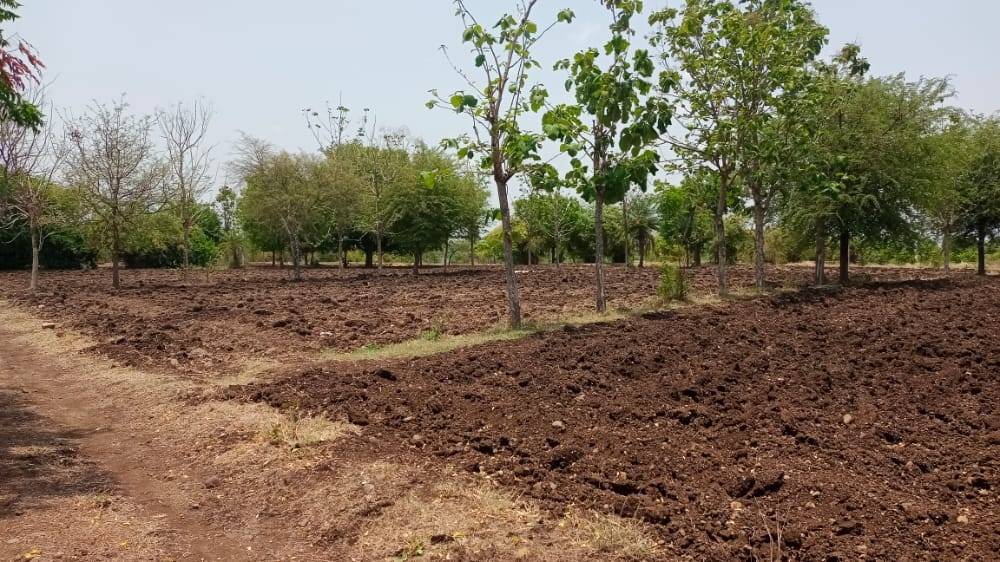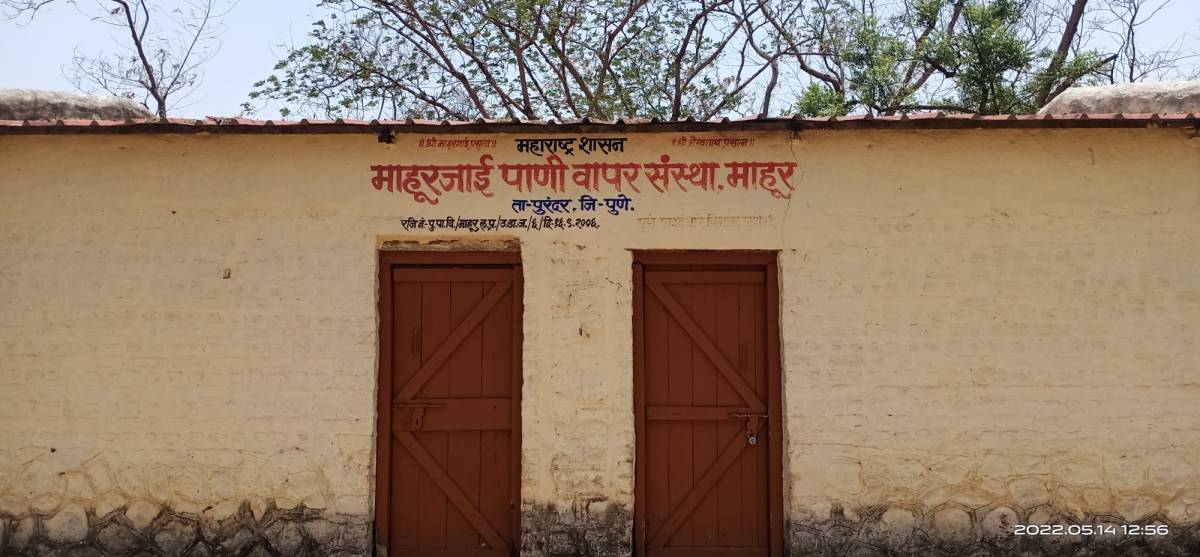All members had rights to irrigation. These rights were not attached to the land. If the land was sold, water rights would revert to the Pani Panchayat…reports Sunil Balasaheb Dhumal
It was as a seven-year-old growing up in Naigaon that Balasaheb Kad saw the concept of Pani Panchayat transform his drought-prone village into a region of plenty.
“Canal construction, lift irrigation schemes and collective management of water resources benefited many farmers,” he recalls.
Additionally, strict norms followed for choosing the low water-intensive crops by farmers, resulted in improved groundwater reserves giving a boost to the village economy. So much so that the Naigaon model became an epitome of success in managing water resources, replicated in many other parts of the state in subsequent years.
However, the very success achieved went against the idea of equitable-water distribution. Ample water saw farmers plant water-guzzling crops like sugarcane, and today, the Pani Panchayat concept of water equity lies shattered, as Kad, currently the sarpanch of Naigaon, laments.
The Pani Panchayat model of water equity
It was the visionary Vilasrao Salunkhe who first mooted the concept of water equity, after observing the plight of rural folk during the 1972-73 drought in Maharashtra. Being a common property resource (CPR), Salunkhe felt that water should not be distributed in proportion to the size of the land.
Thus was born the Pani Panchayat, a specific model of integrated micro- watershed development pioneered by the Gram Gourav Pratisthan (GGP), a voluntary agency based in Purandar taluk of Pune district. Herein, groups of farmers formulate and implement community irrigation projects based on mutually agreed-upon principles of water sharing.
Salunkhe’s model of participatory development so impressed the then Maharashtra chief minister Vasantdada Patil that he coined the slogan ‘Pani Adwa, Pani Jirwa,’ (hold water, harvest water) in consultation with Salunkhe.
The Naigaon experiment
In drought-prone Naigaon, water had always been scarce. The land could be cultivated for just four months in a year. The women, recall Tarabai Kad (65) and Ashabai Waghale (70), had an especially tough time, having to walk 4 to 5km daily to fetch drinking water. Barring a couple of homes, no one, henceforth, kept animals.
In 1972, the village suffered a devastating drought. Taking 40 acres of barren land from the village temple trust, Salunkhe constructed a pond on it. He followed this up by building several small and large seepage ponds in many villages. When the rains arrived in June, the ponds accumulated water, reducing the severity of the drought and leading to good crops.
He also initiated various rainwater harvesting schemes to improve groundwater reserves. This helped stave off droughts and make villages self-sufficient in water in the long term.
The principles of Pani Panchayat
The Pani Panchayat system functioned on the basis of ‘Panchsutri’, or five principles:
Water should be shared on the basis of the number of members per family, not in proportion to the land owned. Every household was given water rights up to a maximum of 25 acres, with an allocation of 0.5 acre per capita. Land in excess was to be rain-fed.
All members had rights to irrigation. These rights were not attached to the land. If the land was sold, water rights would revert to the Pani Panchayat.
Members were to contribute 20 per cent of the initial capital cost, with the remaining 80% being provided by the GGP as an interest-free loan, in case of non-availability of government subsidy. In case of availability of 50 per cent through government subsidy, the remaining 30 per cent would be met by GGP as an interest-free loan.
Landless labourers could avail of water rights to cultivate land owned by others on an informal basis.
Water-intensive crops like sugarcane, banana, or paddy were not included in the cropping pattern.
The project was to be entirely administered by beneficiaries with the help of a Pancha Committee comprising member-beneficiaries.
How Pani Panchayat works
Purandar taluk in Pune district receives about 500mm of rainfall annually. Following the 1972 drought, 85 million cubic metres (MCM) of water was made available in Mahur village under a project of the taluk. It involved building contour bunds to trap rain water and constructing a percolation tank at the foothill. For the next few years, the area continued to be traditionally farmed.
In 2006, the Mahurjai Water Utilisation Society was set up in Mahur village on the lines of the Pani Panchayat. As part of this society, farmers undertook plans on proper utilisation of available water. Over time, as the demand for water increased in line with the area under cultivation, the farmers together decided to utilise the pond water only four days a week. 110 MCM of water was successfully made available, through appropriate water management from 64 sources, which lasted in summers too.
As against only 10 quintals of grain cultivated earlier, production rose to around 100 quintals. Interestingly, this was achieved without the use of hybrid seeds or chemical fertilisers. Alongside, afforestation was undertaken on the upland, with 3,000 trees and grass being planted. The measures resulted in year-round fodder availability and generated increased employment for villagers.
In Naigaon, the locals offered their farmlands adjacent to the streams for seepage of ponds and nala construction. Once the water bodies and the groundwater were rejuvenated, farmers started growing wheat, sorghum, flowers, and vegetables. Many set up custard apple orchards. Regeneration of the village economy saw employment generated for entire families.
For women, it was a huge relief to be freed from the drudgery of fetching drinking water from sources miles away as the nearby ponds and groundwater reserves sufficed for the need.
The collapse of the system
Unfortunately, once water was ensured through judicious administering of resources, the very principles governing its management were ignored by the beneficiaries. In Mahur, farmers started cultivating sugarcane, which the Panchsutri principles had barred.
Justifying the departure, farmer Ram Jagtap tells 101Reporters, “We had saved water by applying rules of controlled extraction from the waterbodies. It was through our own efforts that we made it last through summers, which probably the government couldn’t. Seasonal crops do not guarantee the kind of returns sugarcane can; sugarcane can enrich lives.”
The sarpanch of Naigaon, who saw everything unfold in his village, recalls the decline of the Pani Panchayat system.
“Once the PVC pipes arrived, many wealthy farmers left the group, and the peasant community broke up. Having learnt how to bring water to their farms, courtesy the Pani Panchayat, the rich farmers embarked on separate lift irrigation schemes for themselves. Many planted sugarcane in their fields. Thus, Salunkhe’s idea of sustainable development was shattered,” Kad explains.
Naigaon resident Sanjay Hole, who had worked with Salunkhe in his village, says: “Salunkhe used to insist that at least half an acre of land be cultivated as per the principles of the Pani Panchayat. Many schemes were then implemented in Naigaon, Purandar and other parts of Maharashtra.”
“Salunkhe always insisted that villagers accept the Panchasutri principles wherever the scheme was to be implemented. This brought in success, which came to be appreciated by the then chief minister Vasantdada Patil, Mohan Dharia, and Yeshwantrao Chavan when they had visited Naigaon.”
Regretting the loss of what had been achieved once, Hole tells 101Reporters, “At Hiware Bazar, a farmer, Popatrao Pawar, told us how he had learnt about watersheds from the work of the Pani Panchayat in our village. It left us embarrassed since now, sugarcane is grown here.”
Over time, Naigaon saw the collective decision-making approach failing. “Those days, farmers conducted meetings to prepare irrigation schemes. Now, they are quarreling within a family for not being able to come to appropriate sharing terms of their well water.”
“Once the PVC pipes came, borewells took over. As the area under horticulture increased, groundwater levels were disturbed,” Hole adds.
The underlying reasons for departure from the participatory model of the Pani Panchayat, though, were summed up by Salunkhe’s daughter Sonali Shinde, who is now Managing Director of the Pani Panchayat.
“The principles of the Pani Panchayat that brought the lower castes into the mainstream seemed daunting to big landowners. As a result, the concept survived only in some parts of Satara and Purandar taluk, instead of the entire state,” she says.
Sugarcane politics
While mooting his idea, Salunkhe had warned farmers against cultivating sugarcane, which if planted between January and August would not allow water to be sustained for the rest of year.
“However, this idea did not interest the rich in the society,” says Nilesh Kulkarni, who had worked with Salunkhe.
“In Maharashtra, a lot of politics revolves around sugarcane, sugar and sugar mills. As a result, he was opposed by politicians.”
Kulkarni further highlights how sugar mills function as co-operative societies and constitute a massive vote bank, with a strong hold over local politics. This hindered the Pani Panchayat model from attracting the political support needed.

He continues: “Moreover, in 2000, when Salunkhe met Sunderlal Patwa, the then rural development minister, in Delhi, Patwa had been dismissive of this water-equity model, deeming it too ideal.”
“He had compared it to a daydream,” Kulkarni recalls Patwa as having said. “He called it so even though the system had brought in initial success and seemed worth a shot amid the drought crisis.”
The current scenario
Recently, authorities sanctioned Rs 2.62 crore for the repair of the many canals and water bodies that Salunkhe had built when he worked in these villages. The repairs are currently underway.
While the implementation of the noble idea appears to be on the decline, it remains to be seen whether villagers will wake up to the benefits of the Pani Panchayat and cooperative management in the days to come, once again.
(The author is a Pune-based freelance journalist and a member of 101Reporters, a pan-India network of grassroots reporters.)
ALSO READ-India, China hold military level talks

